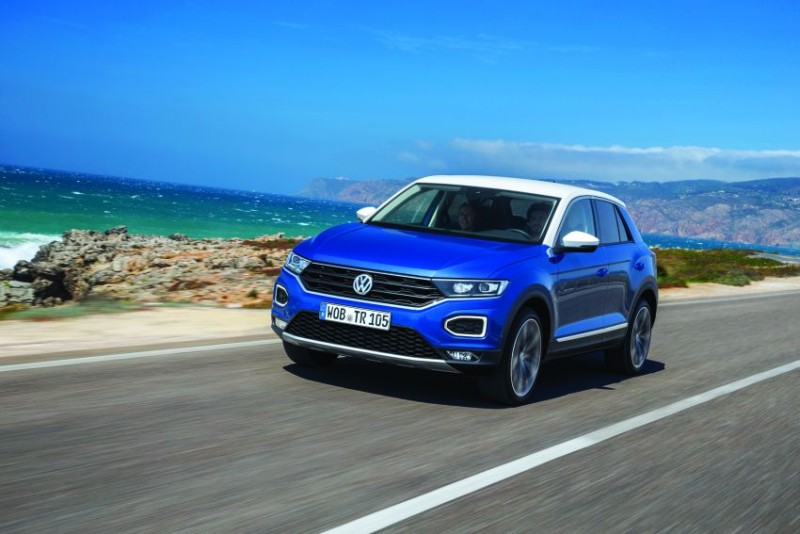The automobile—a status symbol and one of the most common forms of transportation for nearly a century—is facing headwinds around the world as new transportation options proliferate and other factors cause more and more consumers to question the value of privately owned cars. Carmakers and dealerships are facing these challenges head-on with new business models and by doubling down on delivering the right customer experience. But the question remains: What sort of impact can auto companies expect from these efforts?
Turbulent times
U.S. auto sales are expected to be about 16.9 million units in 2019, a 2.5 percent decrease from the previous year, according to business consultancies J.D. Power and LMC Automotive. Investment bank Morgan Stanley forecasts a 0.3 percent decline in global auto sales in 2019 and the Center of Automotive Management in Germany noted in a report that “the ‘fat years’ in the automotive industry are over for now…technological, economic, and political changes are now announcing difficult times for the industry.”
Meanwhile, new players are multiplying rapidly, from ride-hailing companies and subscription-based cars to electric scooters and autonomous vehicles. What’s more, fewer young people are inclined to earn a driver’s license compared to previous generations. A study shows that licensing rates for people under 25 in Victoria, one of Australia’s most densely populated states, had dropped from 77 percent in 2001 to 66 percent in 2015. Similarly, the number of young Americans acquiring driver’s licenses has been declining since the 1980s, according to research by a former professor at the University of Michigan.
Further compounding the issue is the fact that the auto industry has a notoriously long production cycle and the price tags of new models continue to rise as manufacturers add new technology and safety features. Automotive prices are breaking records while retail sales of vehicles that cost under $25,000 are expected to fall 12 percent, Thomas King, senior vice president of J.D. Power’s data and analytics division, tells CNBC.
Revitalizing a mature product
An expensive product with high maintenance costs that begins to depreciate as soon as it’s purchased is already a tough sell, and now auto companies must contend with new competitors, as well as shifts in consumer behavior and perception.
“Any one of those problems in isolation would be tough for a marketer in the auto industry to navigate and they’re happening all at once,” says Kelly Goldsmith, Ph.D., associate professor of marketing at the Owen Graduate School of Management at Vanderbilt University, who is also a behavioral scientist. “If you think about it in kind of a classic, business school 101-sense,” Goldsmith continues, “what you’re dealing with here is what is often referred to as a ‘mature product category.’”
As a mature product, auto manufacturers and dealers have a number of options. They can try to find a way to create new markets for their products, diversify product lines, or join competitors. GM recently announced that it will produce electric vehicles; Toyota struck a partnership with Uber to develop self-driving cars, and Volkswagen teamed up with Microsoft to develop the Volkswagen Automotive Cloud to deliver digital services to drivers.
Building customer trust is another logical approach that’s sometimes overlooked, Goldsmith notes. As an example, she points to the relationship that patients have with their health provider. If people like and trust their doctor, research shows that “when people form that kind of strong relationship, they will go to great lengths in order to stay with their provider,” she says.
“And there’s no reason why you wouldn’t anticipate the same thing in auto, right? You want to buy a car from someone you trust.”
But in an industry marked by frequent recalls and scandals, it’s difficult to find a car company that hasn’t struggled to maintain customer trust at some point in its history. It’s also too early to tell whether any of these new partnerships will change brand perceptions of the auto companies and yield meaningful results.
Ultimately, Goldsmith says, a company’s success depends on whether it understands its customers’ needs and can deliver those expectations. “Number one, you’ve got to understand who your target customer is,” she says. “Number two, you need to understand how your customer thinks and what they need. Finally, know what’s changing in your space, and the evolution of your competitors.”
Volkswagen Australia Builds Trust with Chief Customer Officer
Understanding how the customer thinks and behaves is exactly what Jason Bradshaw, the first chief customer officer at Volkswagen Group Australia, has set out to do. Like other parts of the world, Australia’s auto market has been softening. As a brand, Volkswagen has also had to regain customer trust after the massive emissions scandal of September 2015.
It’s against this backdrop that Volkswagen Australia turned its attention to the customer experience. “Three years ago, we realized that if we were going to improve the experience of our customers, we had to get serious about making it a dedicated focus within the company as opposed to everyone doing their own cordoned-off bit,” Bradshaw says.
There are over 100 Volkswagen dealerships across Australia, and one of Bradshaw’s first moves was to create a systematic way for the dealerships to leverage insights from customer feedback and do something “meaningful” with it.
The company launched a CX portal that’s powered by the Qualtrics XM Platform that enables dealerships to survey customers after a service interaction or purchase and analyze the feedback to understand what its opportunities are to improve the customer experience.
The company also uses AI-based analytics tools across its social platform and other channels to better understand brand perceptions and customer satisfaction at different points in the customer journey. The company was looking for answers to both broad and granular questions such as, “What makes them [customers] say they love us?” Bradshaw says. “And is there a relationship between those things that if we don’t deliver them consistently, it affects the experience in a negative way and to what degree?”
For example, the company learned that customers who were dropping off their vehicle for servicing had certain expectations for an ideal drop-off experience in terms of wait times and other factors. The information was shared with the dealers to better tailor the experience.
These types of insights have helped Volkswagen and its dealers ensure that they’re meeting customer expectations, but it was also important for the company to measure and optimize the employee experience. “The employee experience is what ultimately drives the sustainability of any customer experience,” Bradshaw says.
EX=CX
So, in addition to surveying its customers, Volkswagen Australia created a survey program for dealership employees. About 50 percent of the survey was about the experience of being an employee of the dealership and the other half was about the experience representing the Volkswagen brand.
The purpose of the survey was to “give the people in our dealerships a voice,” understand at a granular level where improvements were needed to drive better engagement, and identify the qualities of high-performing employee advocates, Bradshaw explains. The responses were tracked across geographical areas and as far down as the sales consultant/service advisor level of each dealership. The high level of transparency and detailed data was key to making the insights actionable, according to Bradshaw. “We didn’t just collect the data and forget about it—we took the data to dealership teams where they learned things like the top factor that’s causing employee disengagement is X and more training is needed in this area, etc.”
For many dealership owners, the survey information was enlightening and nearly all the dealerships joined the program the following year. About 70 percent of the dealerships participated in the survey the first year, and 98 percent participated in the second year. But while it’s important to keep employees engaged, it’s also critical that dealerships attract and hire talented people. At a time when every car sale matters, salespeople need to connect with shoppers but, “it makes it hard for someone to relate to a salesperson when there’s a disconnect in lived experience,” Bradshaw says. “And when we connected our employee and customer data, we saw that there’s a disconnect between people who work at our dealerships and the people who are shopping at our dealerships.”
Consider the female consumer. Carsguide.com.au notes that 52 percent of drivers’ licenses in Australia are held by women and “not only are women here buying more new cars than ever before, they are doing so at a younger age and influencing more than 80 percent of overall car purchasing decisions.” One approach is to hire more female salespeople or have them on the salesfloor at strategic times. Indeed, “one of the things we’re focused on is increasing the number of women that work on our salesfloor when most people come in,” Bradshaw says.
However, instituting gender-based sales tactics is a slippery slope. Volkswagen Australia is taking the middle road by making it a point to share the same information with customers, regardless of gender. “We reckon we tailor a message to the psychographics of our audience rather than a rudimentary gender difference,” Ben Wilks, general marketing manager at Volkswagen Group Australia, tells Carsguide.com.au.
Another challenge was attracting applicants. It’s not a secret that the auto industry is undergoing immense changes that could affect job stability. To combat these factors, the company launched a new careers site, I Am Volkswagen. In an example of how the customer experience intersects the employee experience, the site is designed to get people excited about the Volkswagen brand and engage prospective employees across a wide range of career interests.
For example, to tailor the information they receive, prospects select from a menu of reasons they’re interested in learning more about a career at Volkswagen, such as, “fulfills my passion for cars,” or “lets me help others.” The careers site was launched about two years ago and Bradshaw attributes it to helping the company create a more diverse candidate pool. “Now we have people working at our dealerships who wouldn’t be considered a typical candidate but are some of the best performing employees due to their different experiences,” Bradshaw says.
Since implementing changes to the customer experience, Volkswagen Australia has seen “double-digit” improvements in the customer experience as reported by customer surveys, according to Bradshaw. And as for whether the company can attribute an increase in sales to improvements in its CX, “what I can publicly share is that those dealers that consistently meet or exceed the customer and employee experience benchmarks we set outperform their peers—in terms of profit—by double,” Bradshaw says. “That is, their profit is double that of dealer partners that don’t meet our targets. This is achieved through greater customer retention and attracting new customers as a result of the experience they deliver.”
Looking forward, the company is also planning to build online communities where customers can provide feedback beyond traditional touchpoints such as the vehicle delivery and annual service checks. “Being able to tap into a resource of customers who tell us what matters to them is vital,” Bradshaw says. Customer insights aren’t enough to bring the auto industry back to its heyday, but it could be the difference between understanding what changes are necessary to evolve versus holding on to the past.
















